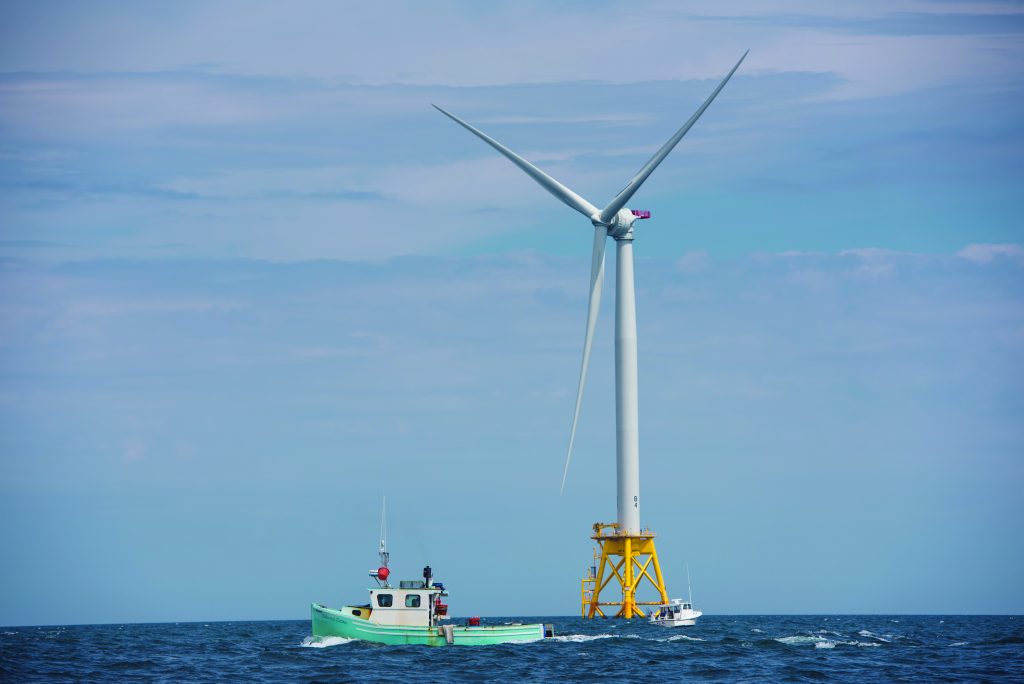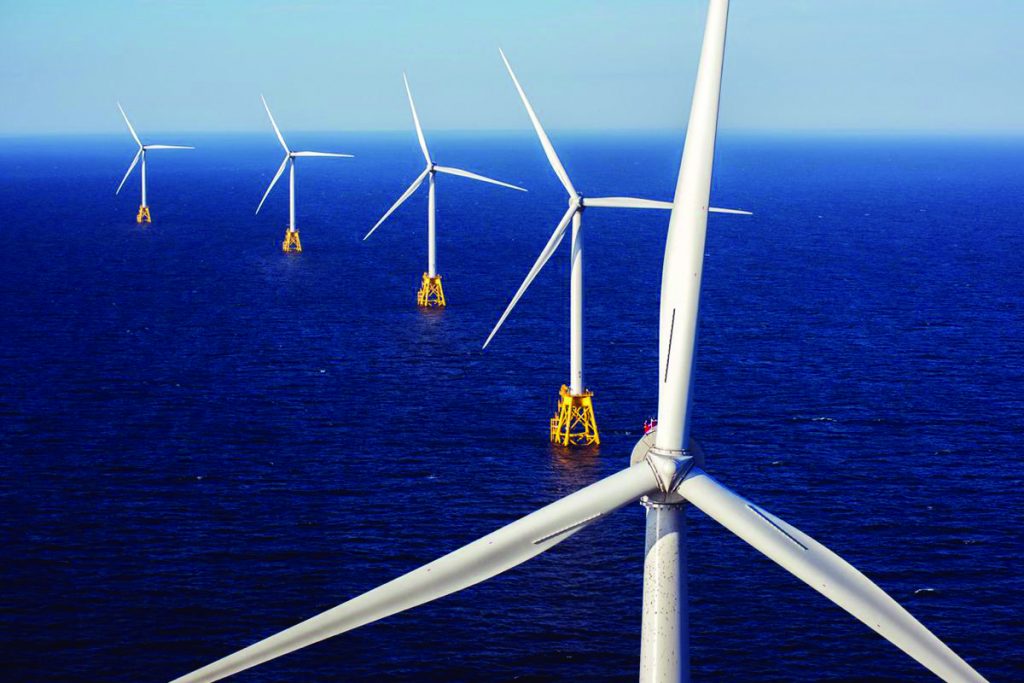Offshore wind has arrived in the U.S., and it is poised to take flight off the East Coast. The Bureau of Ocean Energy Management (BOEM) has issued 15 active offshore wind leases which cover 1.7 million acres in the Atlantic outer continental shelf (OCS) and have generated more than $473 million to the U.S. Treasury. BOEM’s latest sale, held in December of 2018, fetched an eye-popping $405 million for three wind leases offshore Massachusetts.
Today, offshore wind projects totaling 3,110 MW of capacity are contracted to provide electricity in Rhode Island, Massachusetts, Connecticut, New York, New Jersey, Maryland, and Virginia. Additional offshore wind-power contracts are expected to be signed this year in New York and Maine, bringing to eight the total number of states to which offshore wind power will soon be providing electricity. With more projects in the pipeline, the future of offshore wind in the U.S. appears bright.

With the inherent synergies between offshore wind and offshore oil and gas, with respect to jobs, manufacturing, and expertise, the offshore oil and gas supply chain stands to benefit in a big way from the coming U.S. offshore wind boom. In fact, it is already playing a role.
Companies that support the U.S. offshore oil and gas sector in the Gulf of Mexico helped build and install the nation’s first offshore wind project, Block Island Wind Farm (BIWF), which has been operating offshore Rhode Island since 2016. Louisiana-based Gulf Island Fabrication, Inc. constructed the jacket foundations supporting BIWF’s five turbines. Lift boat operator Falcon Global (formerly Montco Offshore), also based in Louisiana, provided feeder vessels and crews to install BIWF.
$70B CAPEX Revenue
In a recent white paper, the University of Delaware’s Special Initiative on Offshore Wind (SIOW) estimates that America’s growing offshore wind-power industry — projected to generate 18.6 GW of clean, cost-effective power in seven states on the Atlantic Seaboard by 2030 — presents a nearly $70 billion CAPEX revenue opportunity to businesses in the offshore energy supply chain. The report identifies significant opportunities for companies that will build, supply, and support the U.S. offshore wind sector, including the need to procure, fabricate, and install 1,700 wind-turbine generators, 1,750 subsea foundations, 45 offshore substations, 16 onshore substations, and approximately 5,000 miles of cable. This is a tremendous opportunity for countless companies that historically have been tied to the ups-and-downs of oil prices. The chance to diversify their portfolios and strengthen their long-term outlook is an unprecedented opportunity.

While this capital investment alone is massive, the operations and maintenance needs also will be substantial, driving their own supply chain demands and opportunities. A companion report that looks at operational expenditures is expected in the coming months. Just as the capital expenditure side of the equation will equal billions of dollars spent, the operational side is expected to inject billions of dollars of spending in the coming years as well. American- built, American-operated, and American-produced energy is something every policymaker should stand behind.
The stage is set for offshore wind to boom off the Atlantic coast, and with BOEM working to also start the process in the Pacific, developers and companies in the offshore energy supply chain need to get ready to build. To that end, the National Ocean Industries Association (NOIA) and the Offshore Marine Service Association (OMSA) are jointly hosting an offshore wind summit in New Orleans September 19 to further the industry’s understanding of the emerging U.S. offshore wind market and the opportunities it presents. Details of the NOIA-OMSA Offshore Wind Summit: Advancing U.S. Vessel Opportunities in the Emerging Offshore Wind Sector are available at www.offshoremarine.org.
American offshore wind energy is ready to soar, and American companies can lead the way.
























